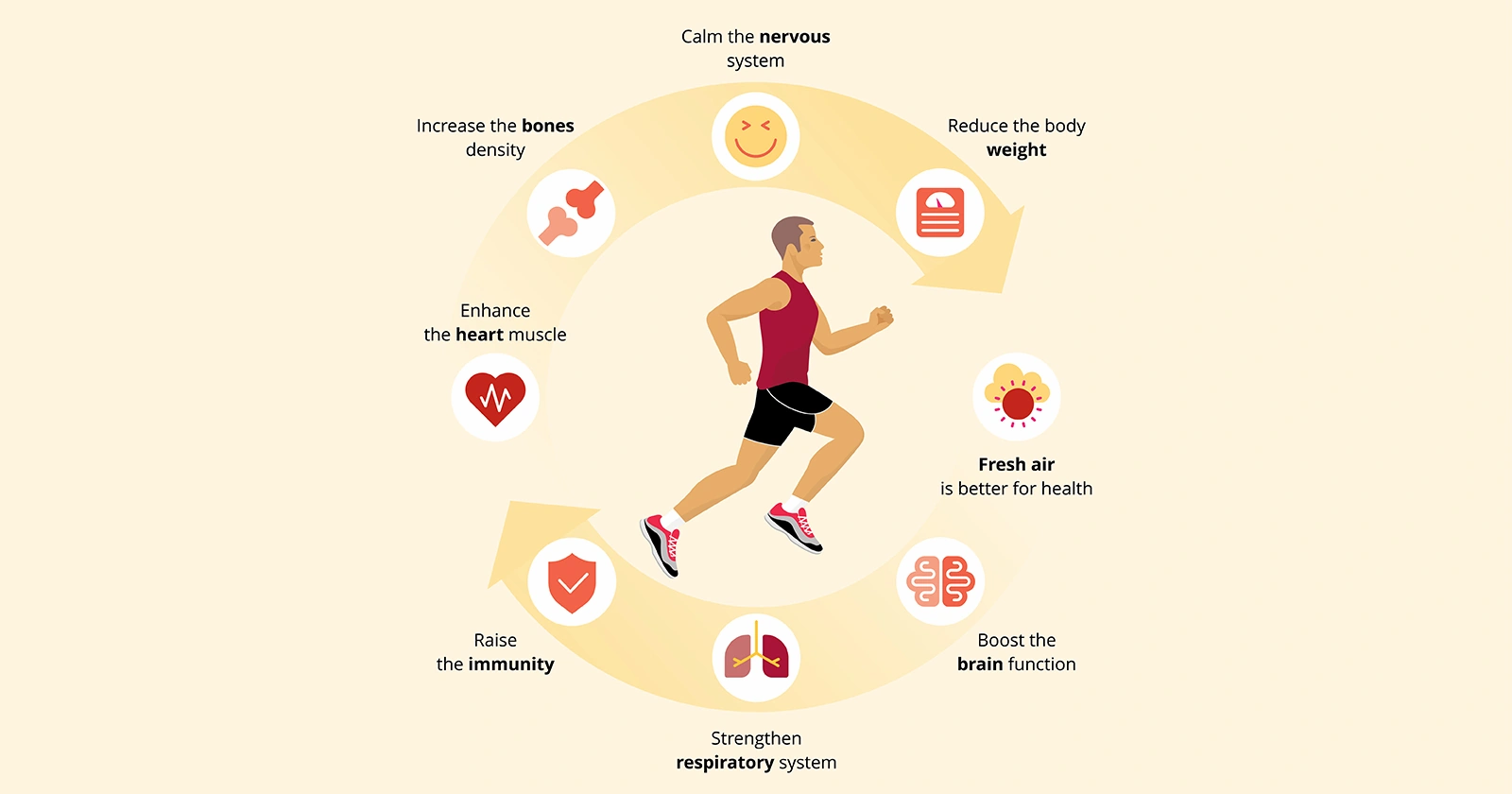When it comes to exercise, everyone is different. It can be tough to discover a fitness routine that suits your personal needs, time limits, budget and goals. Many workout fanatics, old and new, turn to running because it can complement —even enhance— just about every fitness regimen.
Running is one of the most primal exercises and offers a full body and mind workout. It can induce a calmer mental state and act as an antidepressant - soothing bouts of stress and anxiety.
Why Indians Need to Focus More on Health and Exercise?
Indians have among the highest incidence of lifestyle diseases such as heart ailments and diabetes. According to the World Health Organization1, in 2016 India reported 63% of total deaths due to non-commutable diseases, 27% of these were caused by cardiovascular diseases. Cardiovascular diseases make up about 45% of fatalities in the 40-69 year age bracket in India. Exercise, often placed on the back burner due to busy schedules and responsibilities, is so important. It can lower the risks of developing these diseases and a regular fitness routine doesn’t just do wonders for your body but benefits your mind as well.
Being mindful of our present health can prepare us for whatever the future holds. Good health insurance, such as Future Generali Heart and Health Insurance plan can ensure that, even if an unfortunate medical event does arise, you can tackle it head-on with access to appropriate medical care without having to worry about the financial burden of hospital bills.
Why Running Makes Sense?
K. Saldanha, a runner from Bangalore, agrees, “I played sports quite a lot into my 20s but as work got more hectic there was less time to play and I started putting on weight. In my 30s, I tried the gym but being cooped up indoors didn’t appeal to me at all. Starting to run was a real eye-opener - it ticked all the boxes. I was outdoors, challenging myself to keep doing better, yet there was also a sense of calm and time alone that was really enjoyable.”
As Saldanha found, running helps reduce your body’s stress hormones, cortisol and adrenaline, and helps produce endorphins, which act as a natural painkiller and mood-enhancer.
Serotonin, the brain’s happy chemical, also gets released on a run, so regardless of whether you’ve smashed a personal best or not, you’re leaving each run pumped with happiness and feeling mentally relaxed.
Aside from acting as a tool for mindfulness and stress relief, how can running complement your fitness routine? There are plenty of ways, here are just a few:
1. Yoga
Running can seriously improve your yoga as it helps control your breathing (vital for yoga, and similar exercises like Pilates), stride and posture. Running can help extend stamina, even when stretching and recovering, making the recovery-based practice of yoga even more effective.
Yoga can help with running too. It's a fantastic full-body workout that promotes active recovery as well as flexibility and posture. In particular, yoga helps activate muscles in the back, which can improve a runner's stride efficiency.
2. Barre
Barre workouts, inspired by ballet, yoga and Pilates, are often used to build strength, agility and flexibility, and to encourage proper body alignment. Running is a great complement to Barre, since it focuses on correct foot alignment, as well as foot and leg strength.
Barre also uses controlled posture and breathing, which running offers a great opportunity to work on.
3. Rowing
Many rowers struggle to maintain control of their core and breathing as intensity increases. Long-distance runs can help with this, since they build stamina and improve the mental strength and controlled breathing needed for rowing, as well as improving posture, flexibility and core strength.
The two activities also complement each other in working on different areas of the body; rowing works calf muscles, hamstrings and core, while running can improve stride and momentum.
4. Climbing and Hiking
Uphill hiking, climbing or trekking are all great ways to work out while immersed in nature, and running can help to build the strength and endurance needed to get faster. Lacing up your trainers and hitting a hilly area on a run—or even playing with the incline on your treadmill—can improve your speed when uphill hiking and scrambling as it targets muscle groups in your lower legs.
If you’re feeling brave, hill sprints can help you to lift your knees higher—ideal for those trickier climbs—and leave you much more confident when it comes to tackling your next uphill challenge.
5. Strength Training
Running can complement strength training by stretching out hamstrings, thighs and calf muscles, and controlling your core through correct posture and controlled breathing. By stretching out the body’s entire musculoskeletal system, recovery times from strength training will decrease, while strength and stamina will increase for your next session.
6. HIIT
High-intensity interval training, or HIIT, is one of the best ways to achieve a full-body workout, but incorporating running into your routine can deliver big improvements on top.
Conclusion
Variety is important when it comes to a fitness routine. Like any diet or lifestyle, exercise needs to be well-balanced. If you are starting out on your fitness journey, it’s wise to seek the advice of a professional and consult your doctor before making any drastic changes. It’s much like planning for your financial future. An investor’s portfolio needs to include a variety of investments that suit their goals and capabilities and be able to reach full financial potential. More importantly, the advice of a trusted financial advisor can make sure that you are on the path to success.



Comments